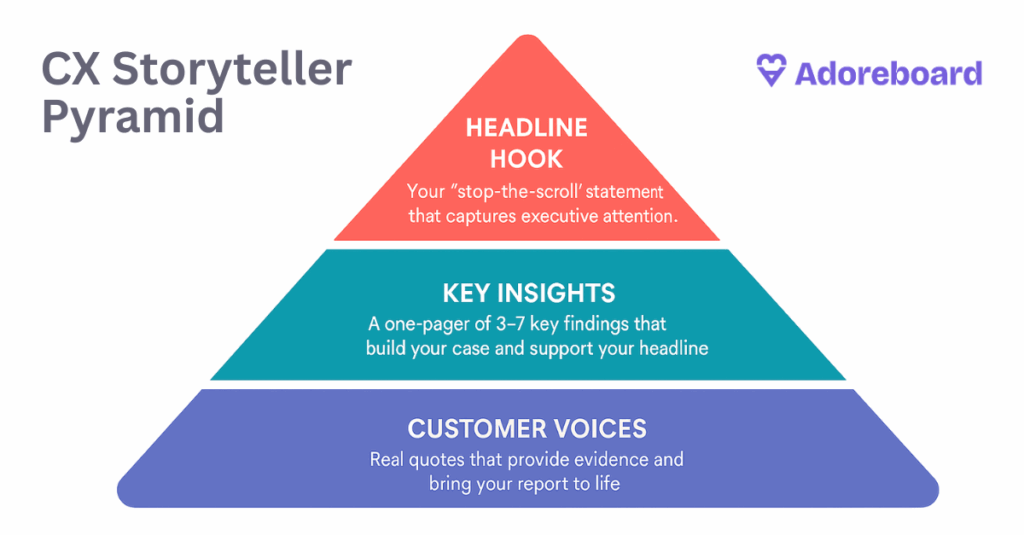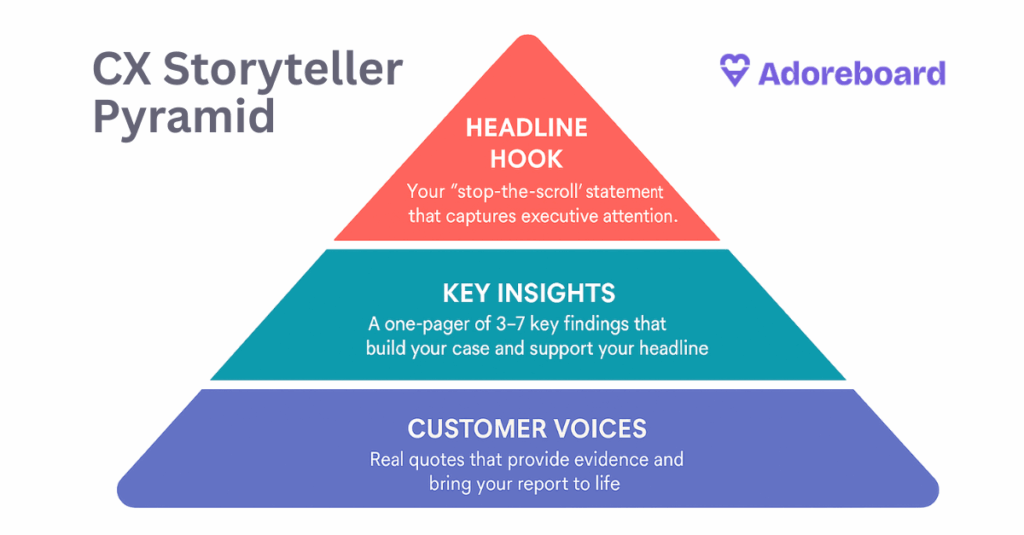Ever wondered why some business reports hit the mark while others leave readers drowning in data? The answer lies in a powerful framework called the Pyramid Principle – a communication approach that’s transformed how leaders present insights.
What is the Pyramid Principle?
Created by Barbara Minto during her groundbreaking work at McKinsey & Company 1, the Pyramid Principle is a structured approach to communication that places your key message at the top, supported by layers of increasingly detailed information below.
Each layer builds a stronger foundation for your main point, just as a pyramid’s base supports its peak.
Why It Works
The Pyramid Principle works because it matches how our brains process information 3. By starting with the conclusion, you immediately give busy executives what they need to know. The supporting points that follow create a logical path that explains and reinforces your main message.
The Three Rules of the Pyramid Principle
- Start with the finding: Lead with your main conclusion, insight or recommendation
- Group supporting insights: Group and present key insights that support your main point
- Back with data evidence: Provide specific data and examples that support each insight/argument
The Research-Presentation Paradox
While presentations should follow a top-down structure (Pyramid Principle), research naturally flows bottom-up:
- Research starts with raw data collection and analysis
- Patterns and insights emerge through careful study
- Key conclusions form as the final step
This creates a natural tension: researchers immersed in data analysis want to share their journey of discovery. But effective communication demands flipping this sequence.
The solution? Write your findings like a news story—headline first, details later.
By embracing the Pyramid Principle, you transform dense research into clear, actionable insights that busy stakeholders can grasp quickly.
Your audience gets the “what” before the “why” and “how,” making complex findings accessible and memorable.
From Research to Results: The Pyramid in Action
At Adoreboard, we’ve embraced this principle in our approach to analytics reporting. Here’s how the pyramid structure shapes our storytelling…
The CX Storyteller Pyramid
Adoreboard has adapted Barbra’s principle and use it as a basis for CX Storyteller Reports; reports that come with a scroll-stopping headline and 1-pager scorecard of $ revenue-linked insights, perfect for getting C-Level attention.
1. HEADLINE HOOK
Your “stop-the-scroll” statement that captures executive attention.
2. KEY INSIGHTS
A one-pager of 3-7 key findings that build your case and support your headline.
3. CUSTOMER VOICES
Real quotes that provide evidence and bring your report to life

Adoreboard generates these CX Storyteller reports in moments from tens of thousands of rows of data (and do a lot more such as SWOT and timeline analysis), however if you’d like to follow the Pyramid Principle yourself and manually produce reports, here’s an outline of the format:
Level 1: The Peak – Key Insights
- Start with a high-impact headline that capture the most significant finding
- Present the core messages that executives need to understand
- Include figures to demonstrate tangible impact (it’s not always the insight that shouts the loudest that will have the most tangible / revenue impact!)
Level 2: The Middle – Supporting Themes
- Group findings into clear, logical themes
- Show patterns and trends that support the main conclusion
- Keep it short; for executives, this might be the last stop!
Level 3: The Base – Evidence
- Present specific customer comments and feedback
- Include detailed metrics and data points
- Share concrete examples that bring the analysis to life
The Pyramid Principle is particularly valuable when dealing with:
Complex Data Analysis
- Transforms overwhelming amounts of information into clear stories
- Helps audiences quickly grasp key points without getting lost in details
Executive Communication
- Respects busy schedules by leading with what matters most
- Builds credibility by showing clear logical reasoning
Decision Making
- Makes recommendations clear and actionable
- Provides a structured way to explore supporting evidence
The Bottom Line
The ability to communicate clearly isn’t just nice to have – it’s essential. The Pyramid Principle gives you a simple and proven framework to transform complex analysis (all your hard work!) into clear, actionable insights that drive decisions and results.
Whether you’re presenting CX research findings, making recommendations, or sharing customer insights, leading with your main message and supporting it with a clear logical structure ensures your audience gets what they need – quickly and clearly.
Remember: in business communication, clarity isn’t just about what you say – it’s about how you say it. The Pyramid Principle helps you say it better!







